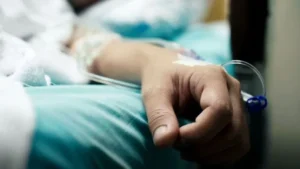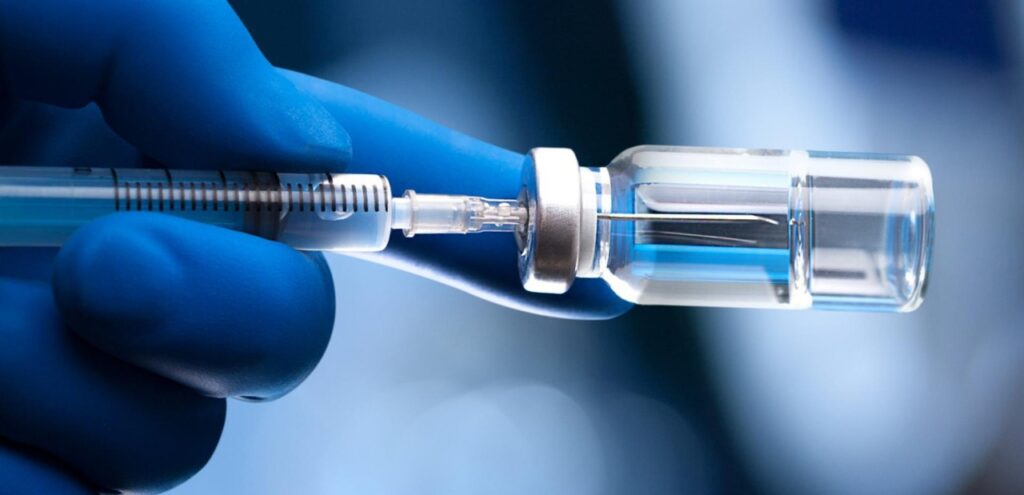Nalbuphine, commonly known by its brand name Nubain, is an opioid medication often used to treat moderate to severe pain. While it is considered less potent than other opioids like morphine, its potential for misuse and addiction cannot be overlooked. This blog post explores the mechanisms behind nalbuphine addiction, the signs and symptoms to watch for, and the available treatment options to help individuals regain control of their lives.
Contents
What is Nalbuphine Addiction?
 Nalbuphine addiction refers to the compulsive use of the opioid medication nalbuphine, despite negative consequences. This addiction occurs when individuals start using the medication in a manner not prescribed by a healthcare provider, such as taking higher doses or using it more frequently to achieve certain effects like euphoria or to avoid withdrawal symptoms.
Nalbuphine addiction refers to the compulsive use of the opioid medication nalbuphine, despite negative consequences. This addiction occurs when individuals start using the medication in a manner not prescribed by a healthcare provider, such as taking higher doses or using it more frequently to achieve certain effects like euphoria or to avoid withdrawal symptoms.
This addiction is characterized by both physical and psychological dependence. Physically, the body adapts to the presence of the drug and may require more of it to achieve the same pain-relieving effects, leading to higher doses and increased risk of overdose. Psychologically, the user may feel a strong craving for the drug and find it extremely difficult to stop using it despite knowing the harmful impacts.
Is Nubain Habit-Forming?
Yes, Nubain (nalbuphine) can be habit-forming. Nalbuphine belongs to the opioid class of drugs. These are known for their potential to cause dependence, tolerance, and addiction if used improperly or for prolonged periods. While nalbupine is used medically for pain relief and is considered less potent compared to other opioids like morphine, it still carries a risk of misuse and addiction.
When a patient uses Nubain, they may develop tolerance over time, meaning they would need higher doses to achieve the same effect. This can lead to physical dependence, where the body adapts to the drug’s presence. If the drug is abruptly stopped, withdrawal symptoms may occur, indicating a physical dependency. Therefore, Nubain needs to be prescribed and monitored by a healthcare professional to minimize the risks of addiction.
Why Are Opioids Addictive?
 Opioids are highly addictive due to their potent effects on the brain’s reward system. Here’s a breakdown of why they are so addictive:
Opioids are highly addictive due to their potent effects on the brain’s reward system. Here’s a breakdown of why they are so addictive:
Activation of the Reward System
Opioids bind to specific receptors in the brain, spinal cord, and other areas of the body. When they bind to these opioid receptors, particularly in the brain, they activate the reward system, releasing large amounts of dopamine—a neurotransmitter associated with pleasure, satisfaction, and reward. This release can create a feeling of euphoria or an intense sense of well-being. This can be highly reinforcing, motivating individuals to use the drug again to recreate that pleasurable state.
Development of Tolerance
Over time, the brain adapts to the presence of opioids. This adaptation leads to tolerance, where the same dose of the opioid no longer produces the same level of euphoria or pain relief. Users may increase their doses to try and achieve the same high level of pain control, which can accelerate the cycle of addiction.
Physical Dependence
With repeated use, the body becomes accustomed to the presence of opioids. If the opioid is suddenly reduced or stopped, the body experiences a range of unpleasant and painful withdrawal symptoms. These symptoms can drive individuals to continue taking opioids to avoid discomfort, further perpetuating the cycle of dependence and addiction.
Psychological Dependence
Beyond the physical effects, opioids can also lead to psychological dependence. Users may come to rely on the drug to cope with stress, anxiety, or depression. Drug use becomes a key part of managing emotions and life’s challenges. Hence, making it difficult to stop using without appropriate psychological support and coping strategies.
Due to these reasons, opioids, even when used as prescribed, can lead to dependence and addiction, necessitating careful management and monitoring by healthcare professionals.
What Are The Symptoms Of Nalbuphine Addiction?
Recognizing the symptoms of opioid addiction is crucial for early intervention and effective treatment. Here are some key signs and symptoms to look for if you suspect someone might be struggling with opioid addiction:
1. Physical Symptoms
- Increased Tolerance: Needing more of the drug to feel the same effects.
- Withdrawal Symptoms: Experiencing symptoms like nausea, sweating, shaking, and diarrhea when not using the drug.
- Changes in Physical Appearance: Neglect of personal grooming, unexplained weight loss or gain.
- Drowsiness: Frequent periods of excessive sleepiness or sedation.
- Reduced Pain Sensitivity: Showing less sensitivity to pain stimuli.
2. Behavioral Symptoms
- Doctor Shopping: Visiting multiple doctors to obtain more prescriptions.
- Secrecy and Isolation: Withdrawing from family and friends, being secretive about where they are going or what they are doing.
- Neglecting Responsibilities: Ignoring work, school, or family obligations.
- Increased Use: Using the drug more often than intended, or in larger amounts over time.
- Continued Use Despite Problems: Continuing to use opioids despite physical or psychological problems caused or worsened by drugs.
3. Psychological Symptoms
- Mood Swings: Rapid emotional changes for no apparent reason.
- Anxiety and Depression: Increased symptoms of anxiety or episodes of depression.
- Irritability and Agitation: Becoming easily agitated or angered.
- Cravings: Strong desire or urge to use opioids.
4. Social Symptoms
- Financial Problems: Unexplained lack of money, borrowing, or stealing to fund the drug habit.
- Legal Issues: Encounters with the law such as arrests for possession, stealing, or forging prescriptions.
- Relationship Issues: Problems with relationships due to drug use.
Identifying these symptoms early can be the key to helping someone get the necessary support and treatment to overcome opioid addiction.
What Are The Best Treatments?
Effective treatment for opioid addiction typically involves a combination of medication-assisted treatment (MAT), behavioral therapies, and support services.
Medical options
Here’s an overview of the best treatments:
Medication-Assisted Treatment (MAT)
MAT uses medications alongside counseling and behavioral therapies. The most common medications used are:
- Methadone: A long-acting opioid that reduces cravings and withdrawal symptoms without the euphoria associated with the abused drug.
- Buprenorphine: Partially activates opioid receptors, helping to reduce cravings and withdrawal symptoms with a lower risk of abuse.
- Naltrexone: Blocks opioid receptors and prevents opioids from having their usual effect, helping to prevent relapse.
These medications are intended to normalize brain chemistry, block the euphoric effects of opioids, relieve physiological cravings. And stabilize body functions without the negative effects of the abused drug.
Behavioral Therapies
Behavioral therapies help modify the patient’s attitudes and behaviors related to drug use, increase healthy life skills, and persist with other forms of treatment, such as medication. Common types include:
- Cognitive-Behavioral Therapy (CBT): Helps patients recognize, avoid, and cope with the situations in which they are most likely to use drugs.
- Contingency Management (CM): Uses a voucher-based system where patients earn “points” based on negative drug tests. They can exchange this for items that encourage healthy living.
- Motivational Interviewing (MI): Increases an individual’s motivation to change behavior and enter treatment.
Counseling
Both individual and group counseling can be effective. Counseling can provide emotional support, education about addiction, and teaching coping and relapse prevention skills.
Support Groups
Participation in support groups like Narcotics Anonymous (NA) can provide ongoing community support and a network of peers who are also working toward recovery.
Comprehensive Care
A comprehensive treatment plan may also include assessment and treatment for co-occurring mental health issues, such as depression or anxiety, which often accompany addiction. Career counseling, legal assistance, and educational support can also be crucial.
Long-Term Follow-up
To prevent relapse, long-term follow-up and monitoring are essential. Recovery is a long process that might require multiple treatment cycles and ongoing monitoring to ensure the individual stays drug-free.
Each person’s needs are different, so treatment should be tailored to address individual patterns of drug use and any co-occurring medical, mental, and social problems.
How Can I Prevent Nalbuphine Addiction?
 Preventing nalbuphine addiction involves a combination of self-awareness, responsible medication management, and seeking help when needed. Here are some strategies to prevent addiction:
Preventing nalbuphine addiction involves a combination of self-awareness, responsible medication management, and seeking help when needed. Here are some strategies to prevent addiction:
- Follow Prescriptions Carefully: Always use nalbuphine or any other opioid exactly as prescribed by your healthcare provider. Do not increase the dose or frequency without consulting your doctor.
- Monitor Your Use: Keep track of the amount of medicine used from each new bottle and be aware of how the medication affects your body and mind.
- Educate Yourself: Understand the risks of opioid addiction and be aware of the signs and symptoms of dependence and addiction.
- Avoid Long-term Use: Since the risk of addiction increases with prolonged use, use nalbuphine for the shortest time possible. Discuss with your doctor any non-opioid alternatives that might be available.
- Be Cautious with Past Substance Use: If you have a history of substance abuse or addiction, inform your doctor, as you may be at a higher risk of developing addiction.
- Seek Help for Emotional Issues: If you’re using opioids to cope with emotional pain, consider seeking therapy or counseling to address these issues healthily.
- Dispose of Unused Medication: Properly dispose of any unused nalbuphine to reduce the risk of misuse and accidental ingestion by others.
By proactively managing your use of nalbubhine and maintaining open communication with your healthcare providers, you can significantly reduce the risk of developing an addiction.
Conclusion
In conclusion, understanding nalbuphine and its potential for addiction is crucial for anyone prescribed this medication. By closely following your doctor’s instructions, monitoring your usage, and being aware of the signs of addiction, you can manage pain effectively while minimizing risks.
Always consider non-opioid alternatives for pain management and reach out for professional help if you notice any signs of dependency. Remember, taking proactive steps towards responsible medication use not only protects your health but also enhances your overall well-being and quality of life.
